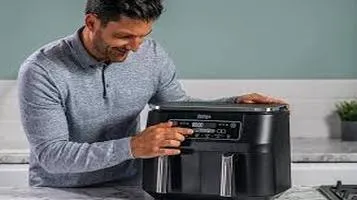DIY Plumbing Repairs: Empowering Homeowners with Confidence and Cost Savings
DIY plumbing repairs can be a cost-effective and rewarding way to address minor plumbing issues around your home. With the right tools and knowledge, homeowners can tackle common problems such as leaky faucets, clogged drains, and running toilets. Basic plumbing tools like a plunger, wrench, and plumber’s tape are essential for these tasks. It’s important to understand your home's plumbing system and identify the problem accurately before starting any repair. Online tutorials and guides can be invaluable resources for novices. However, it’s crucial to recognize when a problem is beyond your skill level, as improper repairs can lead to more significant issues. For complex plumbing concerns, consulting a professional plumber is advisable to ensure safety and prevent further damage.

In today's ever-evolving world, homeowners are increasingly turning to do-it-yourself (DIY) solutions for a variety of household tasks. Among the most daunting, yet rewarding, of these tasks is plumbing repairs. While plumbing work can seem intimidating due to its technical nature and potential for significant water damage, with the right tools, resources, and mindset, DIY plumbing repairs can be a manageable and incredibly satisfying endeavor. Here’s a comprehensive review of DIY plumbing repairs, touching upon the challenges, benefits, and key considerations for any aspiring home handyman or handywoman.
The Appeal of DIY Plumbing Repairs
One of the primary motivations for tackling plumbing repairs yourself is the significant cost savings. Professional plumbers can charge hefty fees for their services, often with additional costs for emergency calls or after-hours work. By handling minor plumbing tasks on your own, you can save hundreds, if not thousands, of dollars over time. Furthermore, DIY plumbing repairs provide a sense of empowerment and self-reliance. There is a unique satisfaction that comes from diagnosing a problem, finding a solution, and executing the repair successfully.
Common DIY Plumbing Tasks
Some common plumbing issues that homeowners can confidently address themselves include:
1. Fixing Leaky Faucets: A dripping faucet can be both annoying and costly in terms of wasted water. Often, the culprit is a worn-out washer or O-ring, which can be easily replaced with basic tools and a little know-how.
2. Unclogging Drains: Whether it’s a bathroom sink, shower, or kitchen drain, clogs are a frequent issue. Simple tools like a plunger, a drain snake, or even a homemade baking soda and vinegar solution can often clear the blockage without the need for harsh chemicals.
3. Installing New Fixtures: Upgrading to a new faucet or showerhead can be a straightforward task. Typically, it involves turning off the water supply, unscrewing the old fixture, and installing the new one with appropriate sealing tape to prevent leaks.
4. Repairing Running Toilets: A toilet that won’t stop running can be vexing. Often, the problem lies with the flapper, fill valve, or float. These components are relatively inexpensive and can be replaced with minimal effort.
The Learning Curve
While the idea of DIY plumbing is appealing, it’s important to acknowledge the learning curve involved. Plumbing systems can vary widely between homes, and what works in one situation may not apply in another. Homeowners need to be prepared to invest time in research and education. Fortunately, the advent of the internet has made it easier than ever to access instructional videos, detailed guides, and forums where experienced DIYers and professionals share advice.
Tools and Materials
Having the right tools is essential for successful DIY plumbing repairs. A basic plumbing toolkit should include:
- Adjustable Wrenches: For tightening and loosening nuts and bolts.
- Pipe Wrench: For working with larger pipes.
- Plunger: A fundamental tool for clearing clogs.
- Plumber’s Tape (Teflon Tape): To ensure watertight seals.
- Pipe Cutter: For cutting pipes to the correct length.
- Basin Wrench: Specifically designed for working in tight spaces, such as under sinks.
Investing in quality tools can save considerable time and frustration. Additionally, keeping a stock of common replacement parts, such as washers, O-rings, and flappers, can help expedite repairs.
Safety Considerations
Safety should always be a priority when undertaking any DIY project. For plumbing repairs, this includes:
- Turning Off the Water Supply: Always ensure the water supply is turned off before starting any repair to prevent flooding.
- Using Protective Gear: Gloves and safety glasses can protect against sharp edges and chemical splashes.
- Ventilation: If using chemical cleaners, ensure the area is well-ventilated to avoid inhaling fumes.
- Electrical Safety: Be cautious of electrical outlets and appliances, especially when working in bathrooms and kitchens, to prevent electric shock.
When to Call a Professional
While many plumbing tasks are suitable for DIYers, there are times when calling a professional is the best course of action. Complex issues involving major leaks, sewer line problems, or extensive pipe replacements often require the expertise of a licensed plumber. Additionally, if you find yourself repeatedly addressing the same issue, it may indicate a deeper problem that needs professional assessment.
Conclusion
DIY plumbing repairs can be a highly rewarding experience, offering substantial cost savings and a sense of personal achievement. By starting with small, manageable tasks and gradually building your skills, you can tackle a wide range of plumbing issues with confidence. However, it’s important to recognize your limits and know when to seek professional help to avoid costly mistakes. With the right approach, DIY plumbing can transform you from a hesitant novice into a confident home repair enthusiast.






